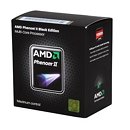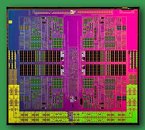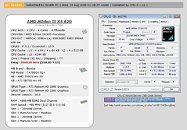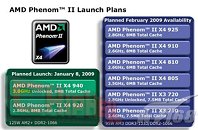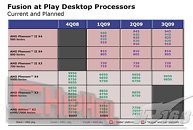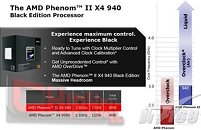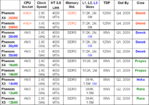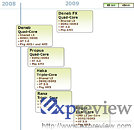
AMD Introduces Phenom II X6 1100T BE, X2 565 BE, Athlon II X3 455
AMD rolled out three new processors today, the six-core Phenom II X6 1100T Black Edition, Athlon II X3 455, and the Phenom II X2 565 Black Edition. The new flagship of AMD's processor lineup, the Phenom II X6 1100T, is based on the AM3 socket, supporting DDR3 and DDR2 memory on older AM2+ motherboards. It carries a nominal clock speed of 3.30 GHz, is based on the 45 nm "Thuban" silicon, features 512 KB of L2 cache per core, and 6 MB of L3 between all six cores. It features the TurboCore technology, which bumps clock speed by a few hundred MHz when it senses high load. As a Black Edition chip, it features an unlocked bus multiplier. Despite its increased clock speed, the 1100T has a TDP of 125W. This chip goes for US $265.
Next up, is the Phenom II X2 565 Black Edition. Clocked at 3.40 GHz, the X2 565 is based on the Callisto silicon (which is Deneb with two cores locked), featuring 512 KB of cache per core, and 6 MB shared L3 cache. This one has a TDP of 80W, and is priced at US $115. Lastly, there's the Athlon II X3 455, a triple-core chip based on the "Rana" silicon (which is Propus with one core locked), it lacks an L3 cache, but features 512 KB L2 per core. With a TDP of 95W, this one goes for $87.
Next up, is the Phenom II X2 565 Black Edition. Clocked at 3.40 GHz, the X2 565 is based on the Callisto silicon (which is Deneb with two cores locked), featuring 512 KB of cache per core, and 6 MB shared L3 cache. This one has a TDP of 80W, and is priced at US $115. Lastly, there's the Athlon II X3 455, a triple-core chip based on the "Rana" silicon (which is Propus with one core locked), it lacks an L3 cache, but features 512 KB L2 per core. With a TDP of 95W, this one goes for $87.
